Newest Issue of Childhood Education Innovations Features Articles on Creativity, Literacy, Wellbeing, and More
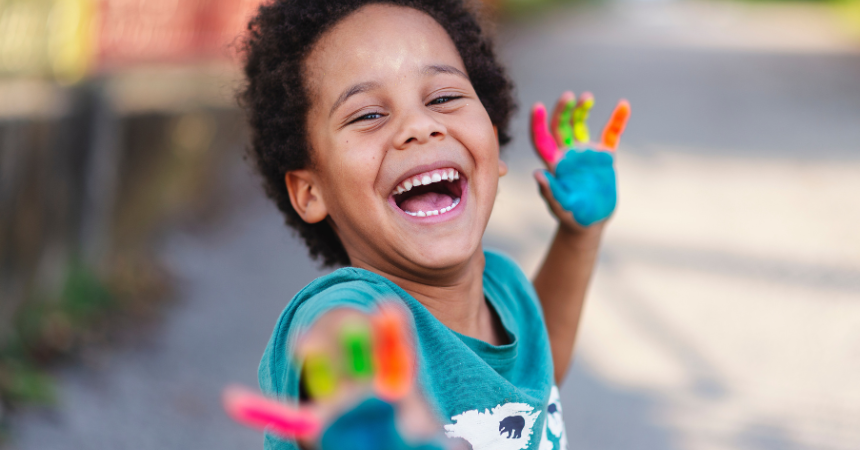

The newest issue of Childhood Education: Innovations features unique, stimulating information about educational programs around the world. The September/October 2024 issue includes articles on creativity, literacy, wellbeing, and more.
These articles are available to magazine subscribers or can be accessed for a download fee. With each new issue, we make two articles free and open to the public for two months. Access the current issue and open-access articles here.
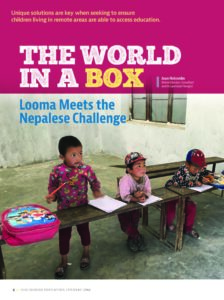
“The World in a Box: Looma Meets the Nepalese Challenge”
Looma Education is developing affordable technology to bring modern, effective, and engaging education to everyone in Nepal, with particular focus on school children in rural communities. Looma access comes in three forms: a solar-powered computer with a built-in projector for regions where electricity and internet are not available or reliable, a server for use in school computer labs with limited to full access to the internet, and online for locations with reliable internet and a computer.
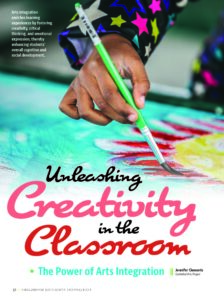 “Unleashing Creativity in the Classroom: The Power of Arts Integration”
“Unleashing Creativity in the Classroom: The Power of Arts Integration”
Arts integration makes learning meaningful. It helps students reach academic goals at a high level, build self-confidence, and increase cooperation and collaboration. This concept provides students with new ways to learn and retain lessons and equips educators with techniques that can be recreated and used in the future.
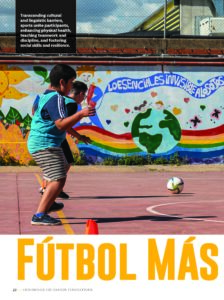 “Fútbol Más: How Sport Can Transform School Realities”
“Fútbol Más: How Sport Can Transform School Realities”
Fútbol Más social-sport sessions are carried out by two professionals: one from the sports sector and the other one from the social sector (e.g., psychologist or educator). This complementarity allows integration of two types of content for every session: technical, tactical content (e.g., controlling the ball) and socioemotional or life skills development content (e.g., conflict resolution or collaboration).
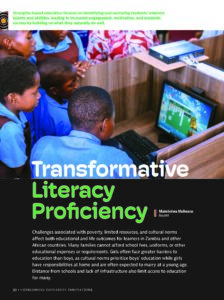 “Transformative Literacy Proficiency”
“Transformative Literacy Proficiency”
In Zambia, ReachAll works to improve the learning, development, and life outcomes of disadvantaged, vulnerable, and marginalized communities. From a foundation of competence-based learning and social-emotional learning, they developed a transformative, inclusive educational framework that builds and improves essential abilities and competencies in learners. The methodology for this innovation has four components: exploration of attributes and new information, building attributes in learners, modeling attributes in learners, and practicing through play, group discussions, and assignments.
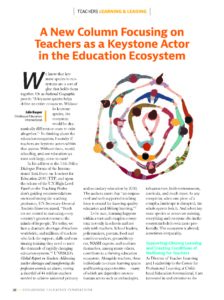 “A New Column Focusing on Teachers as a Keystone Actor in the Education Ecosystem”
“A New Column Focusing on Teachers as a Keystone Actor in the Education Ecosystem”
The Center for Professional Learning recognizes teachers’ pivotal role and thus center them, their lifelong learning, and their wellbeing. Utilizing the Sustainable Learning Framework, they work within communities of practice with educators to ensure they have a seat at the table and are part of co-creation processes, including the co-development, implementation, and evaluation of professional development courses, micro-credentials, workshop decks and activities, handbooks, and other locally contextualized professional learning initiatives.
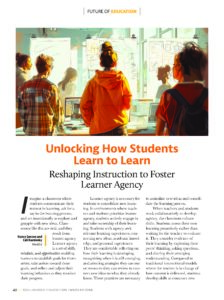 “Unlocking How Students Learn to Learn: Reshaping Instruction to Foster Learner Agency”
“Unlocking How Students Learn to Learn: Reshaping Instruction to Foster Learner Agency”
Learner agency is necessary for students to consolidate new learning. In environments where teachers and students prioritize learner agency, students actively engage in and take ownership of their learning. Students with agency seek relevant learning experiences, connecting new ideas, academic knowledge, and personal experiences. They are comfortable reflecting on how their learning is developing, recognizing when it is still emerging, and selecting strategies they can use or resources they can review to connect new ideas to what they already know.
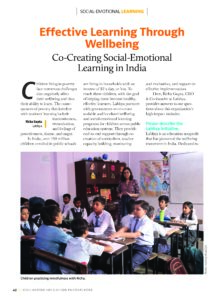 “Effective Learning Through Wellbeing: Co-Creating Social-Emotional Learning in India”
“Effective Learning Through Wellbeing: Co-Creating Social-Emotional Learning in India”
In partnership with Indian governments, Labhya integrates wellbeing programs into the school day. They have co-created and are implementing some of the world’s largest in-school wellbeing programs for vulnerable children at scale. Labhya seeks to make a change at the systemic level and offer a sustainable solution, paving the way toward quality education for children.
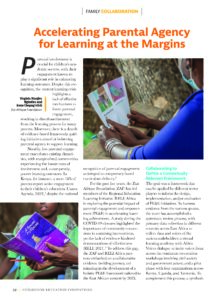 “Accelerating Parental Agency for Learning at the Margins”
“Accelerating Parental Agency for Learning at the Margins”
The Zizi Afrique Foundation (ZAF) has led members of the Regional Education Learning Initiative (RELI) Africa in exploring the potential impact of parental engagement and empowerment (PE&E) in accelerating learning achievement. A study during the COVID-19 closures highlighted the importance of community connections in sustaining interventions, yet the lack of evidence hindered demonstrations of effectiveness. To address this gap, the ZAF and RELI Africa partners embarked on a collaborative evidence-building journey, culminating in the development of a holistic PE&E framework tailored to the East African context by 2023.
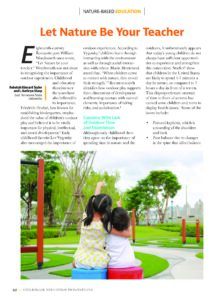 “Let Nature Be Your Teacher”
“Let Nature Be Your Teacher”
Research indicates that most children, if given the choice, not only appreciate natural environments, but actually prefer them over artificial environments. We need to encourage our children to “unplug,” teaching them about the joy that experiences, adventures, and time in nature can provide. The author has combined the power of literature and the passion for nature and thereby encouraged students to spend more time outdoors.
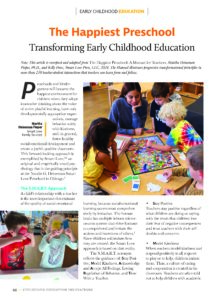 “The Happiest Preschool: Transforming Early Childhood Education”
“The Happiest Preschool: Transforming Early Childhood Education”
A child’s relationship with a teacher is the most important determinant of the quality of social-emotional learning, because social-emotional learning occurs most comprehensively by imitation. The human brain has multiple inborn mirror-neuron systems that drive humans to comprehend and imitate the actions and intentions of others. Since children will imitate how they are treated, the Smart Love approach is based on that reality.
Childhood Education: Innovations is an education magazine that highlights cutting-edge innovations in children’s education from around the world. Articles explore solutions to specific challenges affecting schools, teachers, and learners and showcase the most recent innovations being developed and implemented to address those challenges. Readers will find inspiration for transforming education to better serve children and society.
Published 6 times a year, CE Innovations provides a window into the work being done to bring quality, equitable education to all children. It stands alongside the Journal of Research in Childhood Education as one of our signature publications.